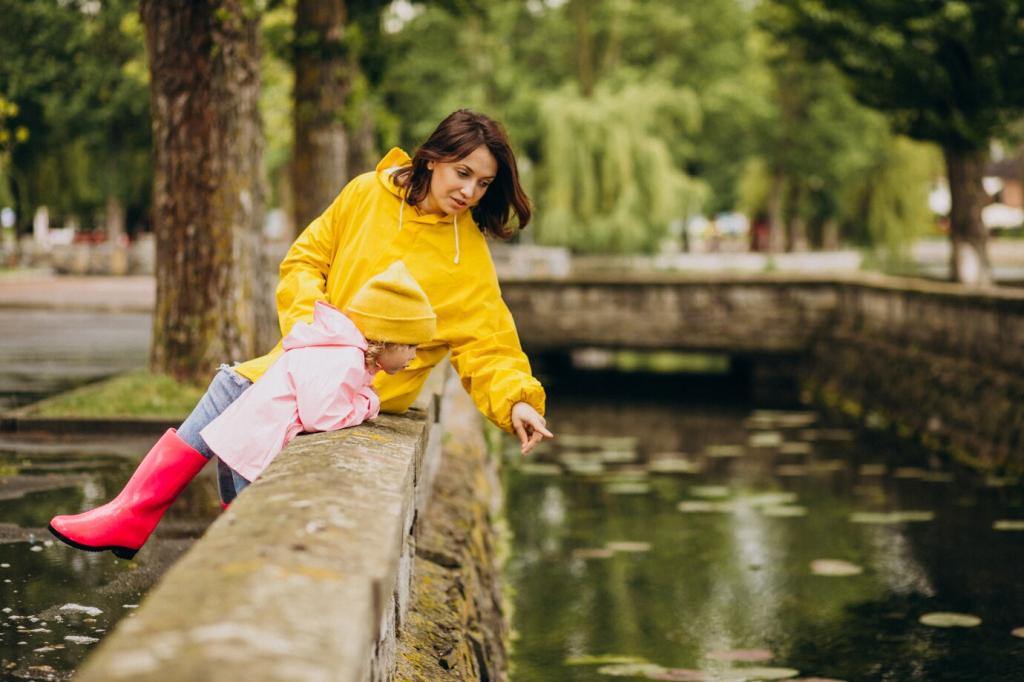Sustainable Fashion Innovations
The fashion industry is experiencing a profound shift toward sustainability, driven by technological advancements, changing consumer priorities, and a growing awareness of environmental impacts. Sustainable fashion innovations are redefining how clothes are designed, produced, and consumed. This transformation aims to minimize environmental harm, promote ethical labor practices, and create a circular system that values resources. Exploring the latest developments in textiles, production processes, business models, and consumer engagement reveals an exciting future for fashion where style and sustainability walk hand in hand.

Plant-Based Fibers
The rise in demand for plant-based fibers such as organic cotton, hemp, and bamboo reflects a commitment to reducing the ecological footprint of textiles. Unlike conventional cotton, which can be resource-intensive, organic alternatives are grown without synthetic pesticides or fertilizers, preserving biodiversity and protecting farmworkers’ health. Hemp and bamboo grow quickly and require less water, further supporting their role in sustainable manufacturing. By prioritizing these fibers, brands are able to offer consumers clothing that aligns with eco-conscious values while maintaining comfort and style.

Recycled and Regenerated Materials
An increasing number of fashion brands are turning to recycled and regenerated materials, such as polyester made from post-consumer plastic bottles or nylon sourced from discarded fishing nets. This approach diverts waste from landfills and oceans while reducing the need for virgin resources. Regenerated fabrics like Econyl demonstrate that quality and performance need not be sacrificed for sustainability. By incorporating recycled materials into their collections, designers and manufacturers are closing the material loop and actively contributing to a more circular economy.

Bioengineered Textiles
Bioengineering is pushing the boundaries of textile innovation, with labs creating fabrics from microorganisms and proteins. Materials like lab-grown leather or spider silk offer cruelty-free and resource-efficient alternatives to traditional options. These textiles are biodegradable or require fewer inputs to produce, helping lower the fashion industry’s overall ecological footprint. As biofabrication techniques become more scalable and affordable, they offer tremendous potential for replacing unsustainable materials while introducing new textures and functionalities to hybrid garments.
Circular Fashion Systems
Clothing Rental Platforms
Rental platforms are changing the way people access fashion by offering wardrobe variety without the environmental toll of frequent purchases. Users can rent high-quality garments for special occasions or workwear needs, returning them for cleaning and reuse by others. This model significantly reduces the volume of new clothes being produced and extends the lifespan of each item. By embracing clothing rental, consumers can enjoy new trends and luxury labels without supporting over-production or contributing to waste.
Garment Repair Initiatives
Repairing clothes rather than discarding them is a core component of circular fashion. Brands are now offering repair services, replacement parts, and tutorials to help customers prolong the life of their garments. These initiatives reframe clothing as an investment rather than a disposable commodity. By normalizing repair and reinforcing the emotional connection to clothing, the industry fosters responsible consumption and reduces landfill contributions, while building customer loyalty.
Take-Back and Recycling Programs
Some fashion labels are now implementing take-back programs where consumers can return old garments in exchange for store credit or new items. Returned goods are sorted, repaired, recycled, or upcycled into new products, allowing materials to stay in circulation. These programs encourage consumer participation in circularity and lower the environmental burden of sourcing virgin fibers. By making recycling accessible and rewarding, brands make sustainability an integral part of the shopping experience.
Traditional dyeing uses vast quantities of water and produces effluents that can contaminate natural ecosystems. Waterless dyeing technology, such as supercritical CO₂ dyeing, eliminates the need for water entirely, significantly reducing pollution. These systems also use less energy and produce minimal waste, setting a new standard for responsible textile processing. As brands adopt waterless dyeing, the industry’s overall water footprint can be drastically minimized.

Supply Chain Transparency
Blockchain and Traceability Technologies
Blockchain technology is being leveraged within the fashion industry to provide immutable records of a garment’s entire journey—from raw materials to finished product. This ensures authenticity and traceability, reducing opportunities for greenwashing or unethical practices. With a single scan or click, consumers can access comprehensive data on sourcing, labor conditions, and environmental standards, fostering trust and encouraging responsible purchasing.
Third-Party Certifications and Standards
Independent certifications such as Fair Trade, OEKO-TEX, and GOTS enable brands to substantiate their sustainability claims with rigorous, science-based benchmarks. These certifications verify everything from organic content and safe chemical use to ethical labor conditions. Displaying trustworthy labels helps consumers differentiate genuinely responsible products from those with superficial green marketing. Adoption of universal standards is instrumental in driving industry-wide improvements.
Transparent Storytelling and Consumer Education
Beyond technical measures, fashion brands are embracing transparent storytelling—using websites, labels, and social media to share the real stories behind their products. Detailed explanations about sourcing, production, and social impact connect consumers with the people and processes behind each garment. By educating their audience, companies inspire loyalty and advocacy, shifting the conversation from surface-level trends to meaningful, sustainable change.
Living Wage Commitments
Manufacturers and brands are increasingly pledging to pay living wages—not just legal minimums—to all workers in their supply chain. Living wages account for basic needs, healthcare, and education expenses, lifting workers out of poverty. Brands that transparently track and report on wage practices set a powerful example, pressuring the industry as a whole to improve labor standards. Living wage commitments transform fashion from an exploitative sector to a force for social good.
Inclusive and Safe Workplaces
Ensuring workplace safety and inclusivity is essential in addressing the fashion industry’s legacy of exploitation and discrimination. Innovative factories are utilizing technology for safety monitoring, investing in gender equality, and providing training opportunities to empower all employees. Workers are not only protected from physical harm but are also given pathways for career growth and participation in decision-making. Emphasizing inclusivity ensures that the benefits of sustainable fashion are shared across the global workforce.
Worker Empowerment and Representation
A truly ethical approach requires the active involvement and representation of workers in shaping policies and practices. Leading initiatives are establishing worker councils, supporting unionization, and fostering open dialogue between labor and management. Empowered workers can advocate for their rights, report abuses, and contribute to continuous improvement. These measures ensure that social sustainability is ingrained in every level of the fashion supply chain.
Waste Reduction and Upcycling
Zero-Waste Pattern Cutting
Zero-waste pattern cutting is a technique that minimizes fabric waste by meticulously designing patterns to use every square inch of material. Creative designers use geometry, modular construction, or draping to ensure nothing is discarded. This approach not only conserves resources but also leads to unique silhouettes and design possibilities. As more brands adopt zero-waste methods, waste generation at the production stage is dramatically reduced, reimagining how clothing is created.


Upcycled Fashion Collections
Upcycling gives discarded textiles or surplus stock a new life as fresh, desirable garments. Emerging labels are sourcing pre-loved clothing and transforming it through creative design, often producing one-of-a-kind pieces with character and history. Upcycled collections challenge the notion that “new” is inherently better, showcasing innovation and craftsmanship. By supporting upcycled fashion, consumers directly participate in reducing landfill and promoting a new value system.
Smart and Adaptive Clothing
Modular fashion designs allow wearers to customize or adjust their clothing with removable parts, reversible features, or convertible elements. One jacket might become a vest or transform into a bag, extending its utility and lifecycle. By investing in versatile clothing, consumers can minimize closet clutter and limit the cycle of overconsumption. Modular innovation aligns with both practicality and sustainability, offering solutions for a conscious, modern lifestyle.
Previous slide
Next slide

